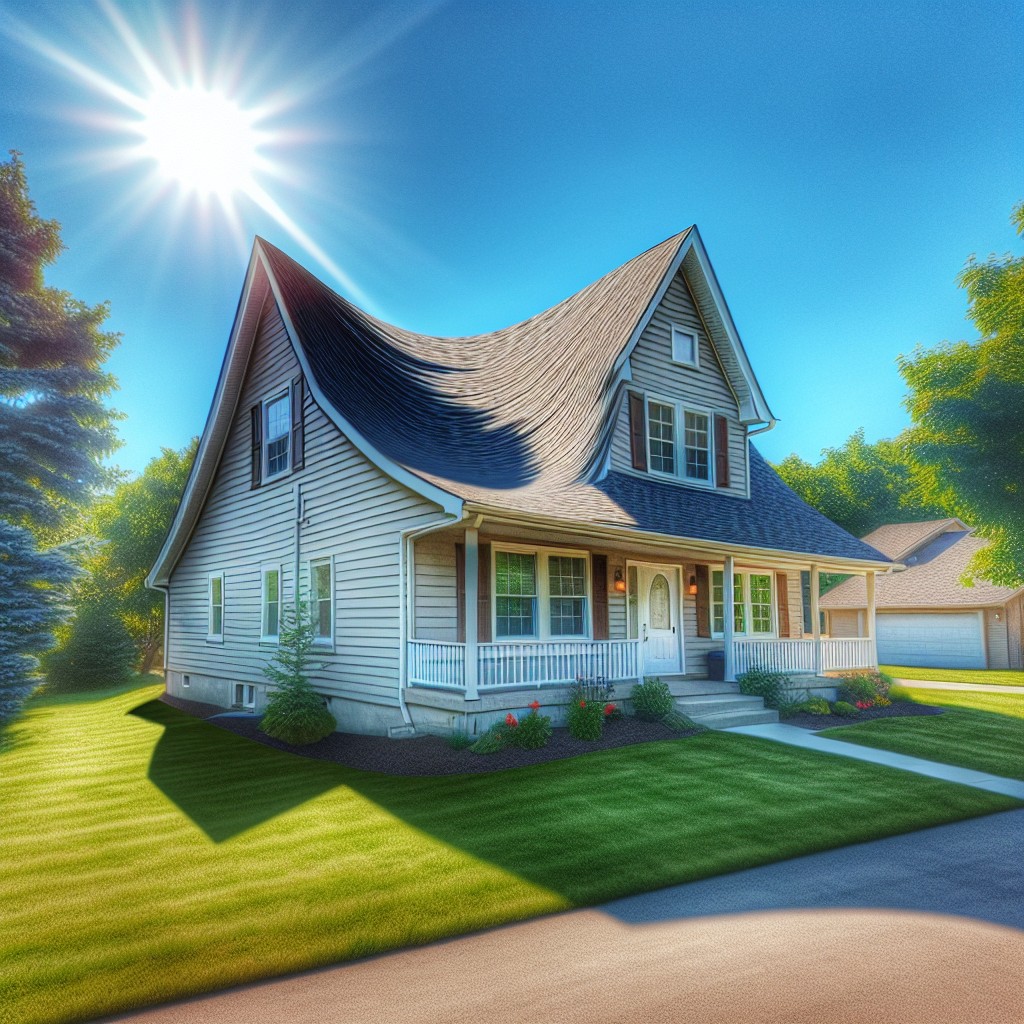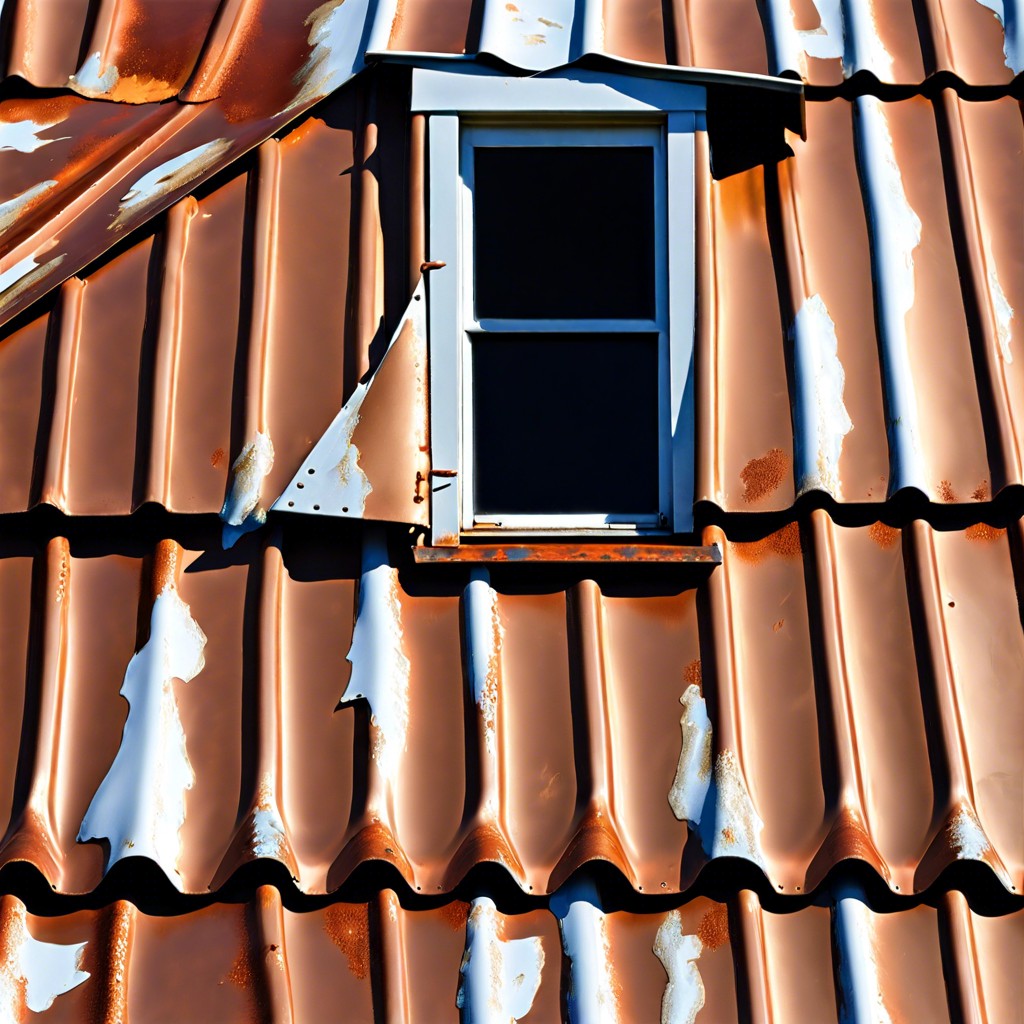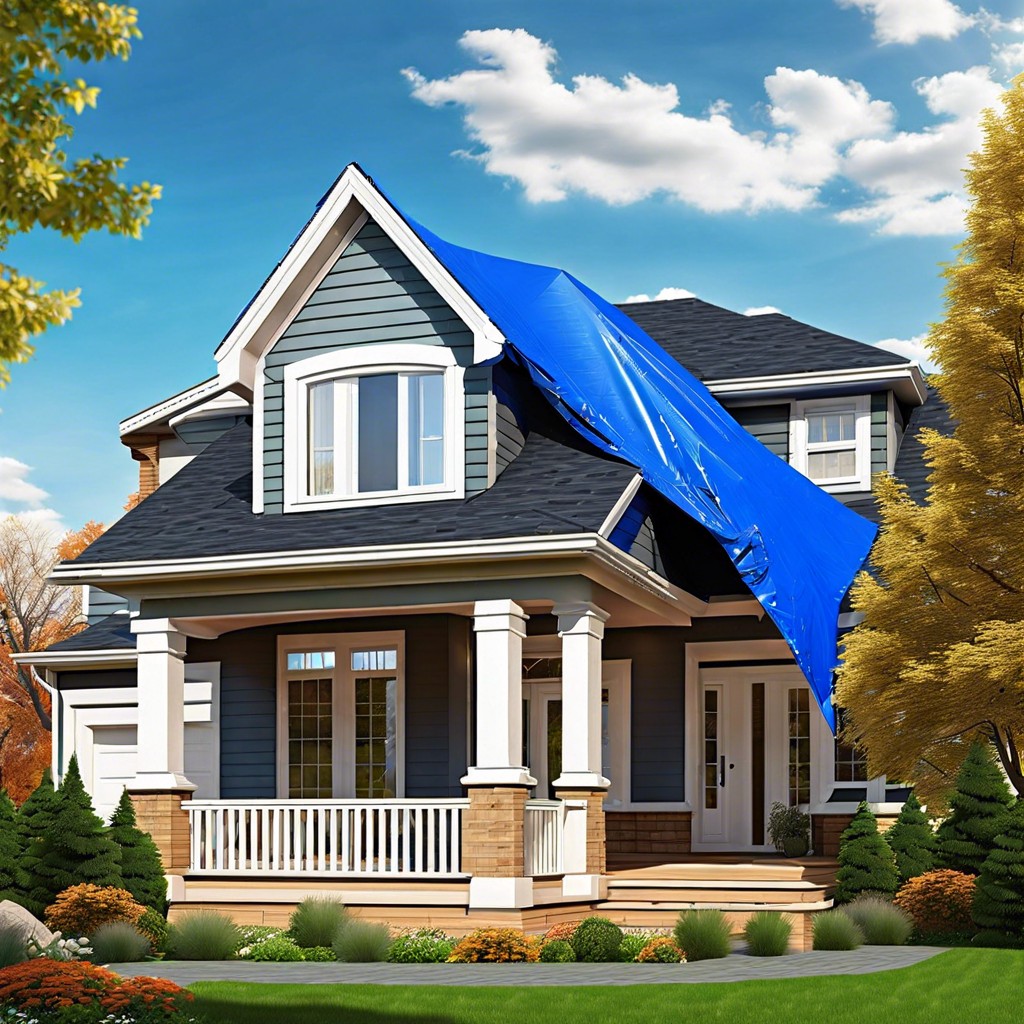Last updated on
This article investigates the acceptable limits of roof sag and the potential implications for your home’s structural integrity.
Key takeaways:
- Building codes set specific thresholds for acceptable roof sag.
- Sag that compromises structural integrity is unacceptable.
- Aesthetic considerations can deem even minor sagging unacceptable.
- Different roofing materials have varying tolerance levels for sag.
- Consult a professional to accurately assess and address roof sag.
Definition and Explanation of Roof Sag

Roof sag occurs when the structure supporting the roof deck begins to bend or bow, leading to a visible dip or curve in the roof line. This phenomenon can result from various issues, including:
- Overloading: Excessive weight from snow, ice, or multiple layers of roofing materials can strain rafters and trusses.
- Inadequate Support: Original construction may not have sufficient structural support, or modifications could have weakened the framing.
- Deterioration: Water damage, wood rot, or rust can compromise the integrity of roofing components.
- Age: Over time, materials can weaken or settle, naturally causing some degree of sag.
Each of these points highlights a potential root cause for sagging that may be addressed through proper maintenance or structural interventions.
Identifying the Acceptable Level of Roof Sag
Determining what constitutes an acceptable level of roof sag hinges on a few critical parameters:
1. Building Codes: These regulations stipulate specific thresholds for roof deflection. Typically, the International Building Code allows for a maximum deflection of L/240, where ‘L’ is the span length.
2. Structural Integrity: Any sag that threatens the structural integrity of the building is unacceptable. Sag should not compromise the roof’s ability to bear loads or allow for proper water runoff.
3. Aesthetic Considerations: Even minor sagging may be considered unacceptable if it negatively impacts the appearance of a building, affecting its value or curb appeal.
4. Type of Roofing Material: Different materials have varying tolerance levels. For example, metal roofing may display more visible deflection than heavier materials like tiles, which can mask minor sags.
5. Manufacturer Recommendations: Referring to the tolerances provided by roofing material manufacturers can guide acceptable levels to ensure warranties remain valid.
6. Age and Condition of Roof: In older roofs, some sagging may be typical due to material degradation or long-term structural settling, but it shouldn’t be progressive or excessive.
If you observe sagging and are unsure about its severity, consulting with a structural engineer or roofing professional is advisable to assess the situation accurately and suggest appropriate solutions.
Factors Influencing Roof Sag
Several elements can contribute to roof sagging:
1. Age of the Structure: Over time, materials can deteriorate, leading to reduced structural integrity and subsequent sagging.
2. Excessive Weight: Heavy snowfall, multiple layers of shingles, or installation of equipment like solar panels can overload the roof’s capacity.
3. Water Damage: Persistent moisture exposure can weaken wooden support structures, especially if there’s leakage or poor drainage.
4. Inadequate Design or Construction: Roof designs that don’t adequately distribute weight or poor construction practices can predispose a roof to sagging.
5. Foundation Issues: Settling or shifting of the home’s foundation can indirectly affect the roof line.
6. Material Failure: The breakdown or warping of roofing materials, such as rot in wooden trusses, can lead to sagging.
Understanding these factors is vital for homeowners to prevent and quickly address the early signs of roof sagging to maintain their roof’s health and longevity.
Assessing Roof Sag
To accurately assess roof sag, it’s crucial to conduct a comprehensive inspection. Begin by inspecting the roof from the outside. Look for any visible dips or curves along the ridge or in the plane of the roof. These irregularities may indicate areas of sagging. It’s important to note that minor undulations may be acceptable, but significant dips can signal structural issues.
Next, evaluate the roof from the inside, typically through the attic. Examine the condition of the rafters and trusses as they are the skeleton of the roof. Signs of stress or bending could contribute to the sagging. Check for any cracks or splits in the wood, which may compromise the roof’s integrity.
Additionally, it’s beneficial to look for signs of water damage or leaks, as prolonged exposure to moisture can weaken structural components and lead to sagging. Measure any sagging areas to monitor changes over time. Small variances may be tolerable, but continuous or worsening sag will need attention.
Consult with a structural engineer or roofing professional for an objective evaluation, particularly if you observe significant or widespread sag. They can provide expert insights and determine the necessary course of action.
Assessing the extent of a sagging roof is imperative in maintaining the safety and longevity of your home. By conducting regular inspections and addressing issues promptly, you can safeguard against potential structural failures.
Addressing Sagging Roof Problems
If your roof exhibits sagging beyond the acceptable threshold, corrective action is necessary to maintain structural integrity and safety. Here are some effective steps for addressing this issue:
1. Professional Inspection:
- Engage a qualified roofing contractor or structural engineer for a comprehensive evaluation. They’ll identify the root cause, be it overloading, structural damage, or material deterioration.
2. Repair or Replace Damaged Components:
- Depending on the condition, replacement of compromised rafters, trusses, or sheathing may be required. Professionals can reinforce areas with additional bracing or sister joists.
3. Improve Load Distribution:
- Sometimes, redistributing or lightening the roof load can mitigate sagging. This might include removing heavy layers of shingles or relocating equipment like HVAC units.
4. Address Underlying Issues:
- Fixing foundational problems or water damage can prevent further sagging or structural concerns.
5. Regular Maintenance:
- Ongoing roof maintenance prevents the exacerbation of small issues that could lead to sagging. Clearing gutters, fixing leaks promptly, and periodic inspections contribute to roof longevity.
Implementing these measures promptly can not only rectify existing sagging but also help prevent future problems, ensuring a durable, safe, and long-lasting roof.




